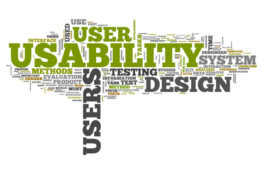Okay, e-mail’s not really dead. It’s still the one thing people get about the Internet. Even with all the junk mail and viruses cramming into one’s mailbox, people still check their e-mail.
So, a few weeks ago, I was speaking to a potential client about a project to help their organization understand that there might be better ways to communicate (online). This is a topic of special interest to me, since way back in the dark ages of the Internet, when I helped the City of Minneapolis develop a training program about the appropriate use of e-mail.
And I have mixed feelings about it. My usability orientation suggests that e-mail is still the easiest to grasp; therefore it’s most likely to be used. On the other hand, I keenly understand the problems — from ever-growing storage and archiving problems, to version control, to searching and managing content. I also am pretty aware of the options with message boards, e-newsletters, and simple content management solutions for Web publishing.
Here’s an off-the-cuff list of issues to consider. E-mail works pretty well for…
- Short messages with a single topic or idea.
- Concrete ideas, where people will not likely misunderstand anything.
- One-to-one communication, especially directives (e.g. from me to you where discussion is not necessary) or simple questions.
- One-to-many communication where the same information applies to everyone at the same time and does not need to be regularly reread.
- Discrete temporal communication, where both parties will read and respond (if needed) in a timely fashion and where the conversation has a clear beginning and ending.
- “Push”ing messages to people (not that they’re going to read it, but it does drop in their inbox) — as opposed to waiting for them to go visit a Web page or discussion board.
- Creating a pseudo-official paper trail (for example, I find it handy to be able to say, “on June 13, you agreed to the following…” — or more likely with my sketchy memory: what did I agree to do?).
E-mail’s not good for…
- Complex discussions, or lengthy communication.
- Anything visual or multimedia, such as charts and graphs, nicely laid out publications, or graphics where motion and sound assist in getting the point across.
- Open discussion, either one-to-one or many-to-many (once the replies overlap, you’ve lost any chance of effectiveness). This includes collaborative work on documents.
- Non-time-specific messages (most people don’t clean their inbox unless required to do so; but they also aren’t very good at finding old messages).
- Delivery of documents or information that should be in a library (such as an Intranet). This includes things you might not need right now, and which I cannot predict exactly when you might need them.
- Versioning of documents. (You sent me something last year and I managed to find it in my Inbox — but is it still the most current version?)
- “Instant” communication.
- Providing message feedback. (Read, perhaps — but understood? Reactions?)
I’m sure after I submit this I’ll think of more, but it’s already a long post, and time is valuable.


